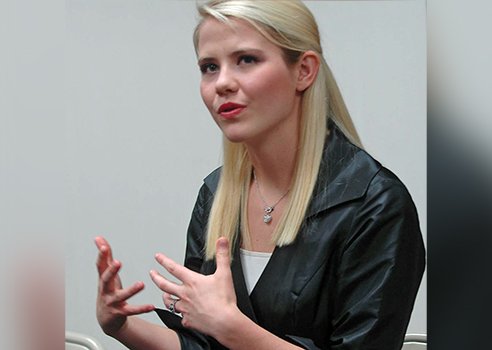Reading time: Just over 1 minute
I like to share interesting pieces of figurative language I encounter in my reading. I write today about a smart metaphor from a Margaret Talbot piece in the New Yorker.
When my husband and I finish with our New Yorkers, we pass them along to a friend. Preparing myself to let go of another one, I quickly re-read an article I’d especially liked: a profile of Elizabeth Smart, headlined “Gone Girl” by Margaret Talbot and published Oct 21/13. (I’ve provided the hotlink, but I’m afraid you’ll see only a précis. The article is “locked” unless you have a subscription.)
As you may recall, Smart (pictured above) was a 14-year-old Salt Lake City teenager abducted from her bedroom in 2002 and held captive for nine months by a deranged white man. That she survived is astonishing. That she’s remained so poised and articulate about her experience is a miracle.
I enjoyed Talbot’s insightful analysis and I particularly appreciated one of her metaphors. Here it is:
It wasn’t quite fair but Smart’s Beck-girl beauty has been part of what fascinated people about her kidnapping, and now that beauty seemed to confirm her triumph as a survivor.
I know what a Breck girl is. But I didn’t know the history of the ad campaign until I had researched this post. Famous for their smiling good looks, their clean-cut appearance and their luxurious hair, Breck Girls were created in the 1930s by commercial artist Charles Gates Sheldon. He preferred to draw “real women” (or, at least, his image of them, complete with halos of light). But before long, the campaign had switched to photography and real models.
All of the following were Breck “girls”: Cheryl Tiegs, Cybill Shepherd, Jaclyn Smith, Kim Basinger, Brooke Shields, Farrah Fawcett and Christie Brinkley.
By making a metaphor out of a cultural icon, Talbot has managed to capture an extraordinarily rich visual image with a mere three words: “Breck-girl beauty.”
[Photo credit: KOMUnews. Cropped. Published under the Creative Commons Attribution-Share Alike 2.0 Generic license.]


